Contents
- 1. Eat Whole Foods
- 2. Include vegetables in your meals
- 3. Popcorn is high in fiber
- 4. Choose Fruit Consciously
- 5. Eat Whole Grains
- 6. Use fiber supplements
- 7. Use flax seeds and chia seeds
- 8. Eat Fruits and Vegetables Whole Instead of Juicing them
- 9. Add avocados to your diet
- 10. Nuts and seeds are good for snacking.
- 11. Eat Whole Wheat Baked Goods
- 12. Don’t Forget the Berries
- 13. Legumes are a great meat alternative.
- 14. Don’t cut the skin off vegetables and fruits.
- 15. Store-bought yoghurts and cereal bars
- 16. Add Fiber to Your Breakfast, Lunch, and Dinner
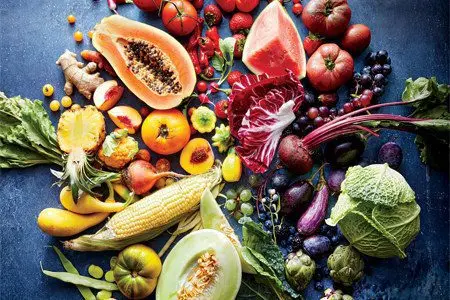
Fiber should be present in the menu in sufficient quantities. It helps to normalize the work of the digestive tract, get rid of constipation and excess weight. Indigestible dietary fiber, regularly supplied with food, is an excellent prevention of diabetes and heart disease. Fiber helps lower blood cholesterol levels. It acts as a natural prebiotic, promoting a healthy gut microbiome.
The daily norm of fiber for women is 25 g, and for men – 38 g. In reality, adults get it 2 times less – about 16 g per day. You can correct the situation if you follow the simple recommendations given in the article.
1. Eat Whole Foods
Fiber is a source of carbohydrates that enter the body with plant foods. Simple carbohydrates are broken down by cells into sugars, but they cannot decompose fiber into molecules. It passes through the gastrointestinal tract unchanged. As a result, a person feels full longer. After eating such food, there is no jump in blood sugar levels.
You can get whole carbohydrates from grains, vegetables, fruits, and legumes.
2. Include vegetables in your meals
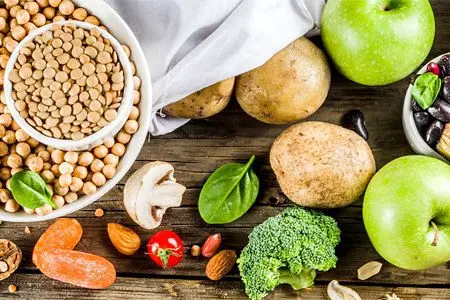
So that the body does not experience a deficiency in plant fibers, a lot of vegetables should be present on the menu. Their useful properties:
Reduce the level of cholesterol in the blood.
Contains few calories.
They are a source of vitamins and microelements.
It is better to eat vegetables before meals, which has been proven experimentally. A group of women were asked to eat a vegetable salad first, and then other dishes. As a result, they began to consume 23% more vegetables during each meal. [1]. In parallel, the total calorie content of foods eaten during the day decreased.
3. Popcorn is high in fiber
Popcorn, which is essentially a whole grain, can be used as a snack to boost your daily fiber intake. In 3 cups of puffed grains, it contains about 4 g.
4. Choose Fruit Consciously
Fruit is a tasty and healthy snack. To get the most fiber out of them, you need to choose pears, apples or berries. For comparison, a small pear contains 5 g of vegetable fiber, and a cup of chopped watermelon has 1 g, so the choice must be made consciously.
To make your fruit snack more satisfying, you can supplement it with protein, such as cheese or nut butter.
5. Eat Whole Grains
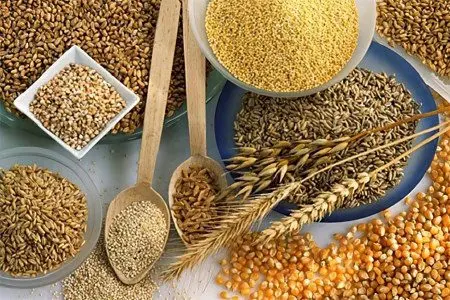
Whole grains are minimally processed, so they have more fiber. Grains peeled from the shell contain less of it. Such products have a longer shelf life, but are devoid of nutrients and are a source of fast carbohydrates.
Therefore, it is recommended to include whole grains in the diet, among which:
Barley.
Oatmeal.
Brown rice.
Buckwheat.
Bulgur.
Millet.
Grains of wheat.
Frike (farik) – groats from young wheat.
6. Use fiber supplements
If the body receives fiber from food, this is ideal, but it is not always feasible in real life. Therefore, it is possible to increase the amount of plant fibers in the diet with the help of nutritional supplements.
Scientists have found that supplements such as:
Guar fiber. It promotes rapid saturation, allows you to reduce daily calorie intake.
Psyllium – This is the main component of metamucil (fiber, which is used to eliminate constipation). Its inclusion in the diet helps suppress hunger, which has been experimentally confirmed. [2].
Beta-glucans. They are found in barley and oats. Once in the intestines, beta-glucans are fermented, act as a prebiotic and improve the intestinal microflora.
Glucomannan. It is found in some 0% fat dairy products and also acts as a base for shirataki. Its inclusion in the diet can reduce appetite and accelerate the onset of satiety.
Nutritional supplements should be taken only on condition that the menu is really deprived of fiber. Otherwise, they will provoke flatulence and discomfort in the intestines. To reduce bloating, you need to drink less water.
Fiber can slow down the absorption of certain drugs, so supplements are consumed one hour before or 4 hours after taking medications.
7. Use flax seeds and chia seeds
The benefits of chia seeds and flax seeds are clear. In addition to 11 g of fiber for every 28 g of product, they contain proteins, minerals, vitamins and omega-3 fatty acids.
Vegetable fibers from chia seeds heal the gastrointestinal tract, contribute to the proper functioning of the rectum. Their use in food is an excellent prevention of diabetes.
In addition to chia seeds, you can include flax, sesame and hemp seeds in your diet.
8. Eat Fruits and Vegetables Whole Instead of Juicing them
Any juices, even fresh juices, contain more sugars than fiber. Therefore, priority in the menu should be given to whole vegetables and fruits.
9. Add avocados to your diet
Avocados are a source of unsaturated fatty acids and fiber. Half of the fruit contains about 5 g of it. In addition, avocados are good for the heart. It can be consumed in its pure form, added to salads, used instead of butter, and more.
10. Nuts and seeds are good for snacking.
Seeds and nuts are sources of protein, healthy fats and fiber. 28 g of almonds contain 3 g of dietary fiber, as well as magnesium and vitamin E necessary for the body.
Seeds and nuts have an impressive shelf life, they do not require special storage conditions, they are convenient to take with you as a light snack or add to various dishes.
11. Eat Whole Wheat Baked Goods
For baking, you need to use not ordinary, but whole grain flour. This will make the usual cupcakes and pies not only tastier, but also healthier. Wheat flour can be replaced with chickpea, barley, hazelnut or almond flour. For example, 28 grams of coconut flour contains 11 grams of fiber.
12. Don’t Forget the Berries
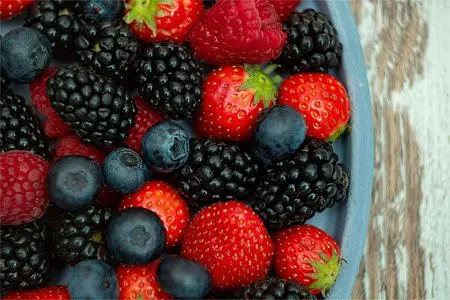
Record holders for fiber content among berries:
Raspberries.
Strawberry.
Blueberry.
Blackberry.
They contain not only vegetable fibers, but also a lot of vitamins, so you can eat berries both fresh and add to cereals, yogurts and other dishes.
13. Legumes are a great meat alternative.
To enrich the diet with fiber and vegetable protein, it should include beans, peas and lentils. One cup of boiled beans is enough to cover 75% of the body’s daily requirement for dietary fiber.
Legumes are a great alternative to fatty meat dishes. To reduce the risk of developing chronic diseases and increase life expectancy, it is enough to eat a portion of peas or chickpeas instead of meat several times a week.
Simple ways to increase the percentage of fiber in the diet through legumes:
Prepare sauces from them, such as hummus.
Add them to minced meat.
Sprinkle them over salads.
14. Don’t cut the skin off vegetables and fruits.
By peeling the peel from fruits and vegetables, a person deprives himself of 50% of the fiber with his own hands. For comparison, one apple or sweet potato with the skin has 4 g of dietary fiber, and without it – 2 g. One whole cucumber provides 2 g of fiber, 1 g of which is contained in the skin.
15. Store-bought yoghurts and cereal bars
Even store-bought processed foods can be a source of fiber. To choose the food that contains the most plant fibers, you just need to carefully read the label. They can be found in sufficient quantities in muesli bars, yoghurts and cereals. The presence of fiber in them will be indicated by components such as inulin and polydextrose.
If the amount of fiber per serving is not less than 2,5 g, this is a good indicator.
16. Add Fiber to Your Breakfast, Lunch, and Dinner
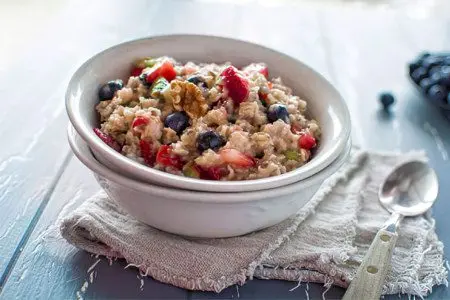
It is problematic to eat the entire daily norm of fiber at one time. Therefore, this amount must be evenly distributed and eaten throughout the day, during each approach to the table.
An example of a rational menu:
Breakfast: oatmeal with berries and seeds.
Snack: vegetables with legume-based sauce or fruit with nut butter.
Lunch: salad or sandwich with whole grain bread.
Dinner: beans, stewed or baked vegetables.
There can be many options, because the list of fiber-rich foods is extensive and varied.









